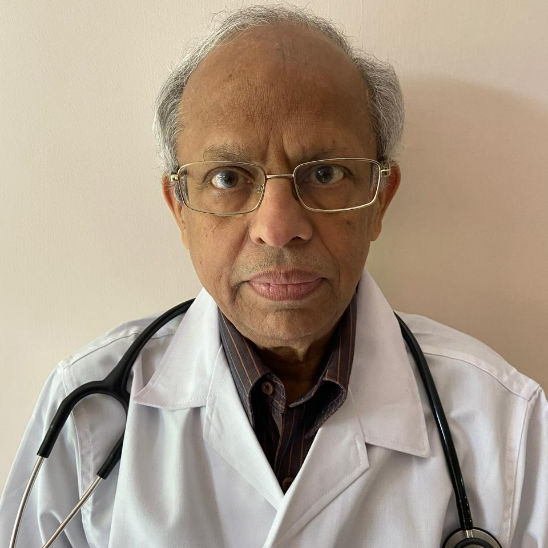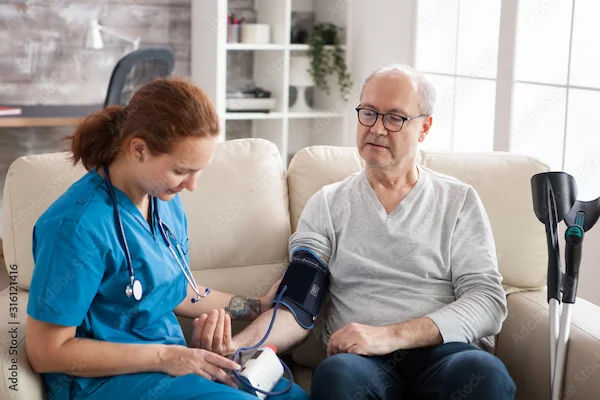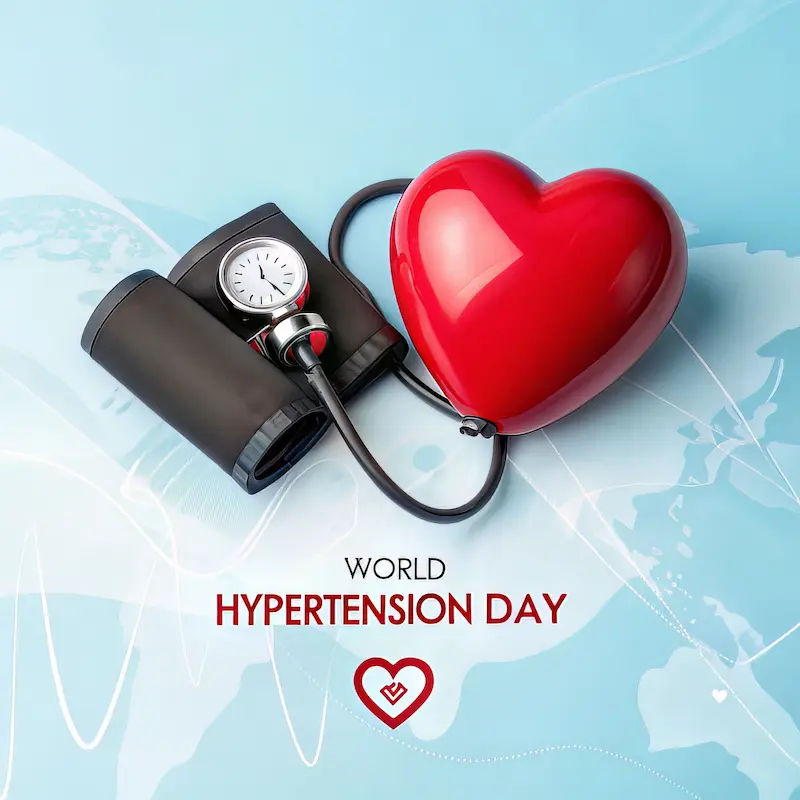Low Blood Pressure Symptoms
Learn about low blood pressure, its causes, symptoms, diagnosis, and treatment options. Discover tips to manage hypotension and improve daily health

Written by Dr Sonia Bhatt
Last updated on 3rd Jul, 2025
Low blood pressure, commonly known as hypotension, is commonly caused when your
blood pressure level is much lower than expected. Although it may not always be a sign of a problem, constant low blood pressure can lead to various problems like insufficient blood flow to the brain, heart, and other vital organs.
Let’s dive in to explore more about low blood pressure and its possible symptoms.
Types of Low Blood Pressure
Low blood pressure can be categorised into several types, including the following:
Postprandial hypotension: This condition occurs when blood pressure drops after eating. It is increasingly common among older adults and people with autonomic nervous system disorders like Parkinson’s disease.
Orthostatic hypotension: This type happens when the blood pressure suddenly falls when changing positions—from sitting or lying down to standing up. It is frequently accompanied by dizziness, lightheadedness, or fainting and is common among older people.
Neurally mediated hypotension: This form of low blood pressure occurs when the brain fails to communicate properly with the heart, often provoked by prolonged standing. It primarily affects children and young adults.
Causes of Low Blood Pressure
Several causes contribute to low blood pressure. Some of the causes are listed below:
Dehydration and Nutritional Deficiencies
Reduction in blood volume due to dehydration lowers blood pressure. Besides, certain nutrient deficiencies, such as vitamin B12 and folate, can hinder red blood cell synthesis, reducing the oxygen-carrying capacity of the blood. Thus, resulting in hypotension.
Heart Problems and Endocrine Disorders
Cardiovascular conditions like Bradycardia (slow heart rate), heart failure, or even valve defects are the conditions that do not allow the heart to pump blood efficiently. A central nervous system or endocrine disorder such as adrenal insufficiency (insufficient hormone production) or thyroid disorder can also affect blood pressure regulation and hormonal balance.
Medications and Other Causes
Some extreme drugs, such as diuretics, beta-blockers, and anti-depressants, that are commonly used to treat hypertension, can lead to low blood pressure. Other causes for low blood pressure, besides the usage of such medicines, can also include a prolonged period of bed rest, severe infections (sepsis), and blood loss due to injury or surgery.
Symptoms of Low Blood Pressure
Some of the common symptoms of low blood pressure are:
Lightheadedness and dizziness: A drastic drop in blood pressure can cause lightheadedness and dizziness, frequently with a feeling of instability.
Fatigue and weakness: This may be caused by inadequate blood flow to muscles
and organs, causing fatigue and a general feeling of weakness in the body.Blurred vision and nausea: Symptoms of blurred vision and nausea due to low blood pressure usually occur as symptoms of orthostatic or postprandial hypotension.
Cold, clammy skin: Low blood pressure can lead to reduced blood flow to the skin, causing it to feel cold and clammy.
If blood flow reduces drastically, the body will not receive oxygen to carry out vital functions.
This can cause severe problems such as difficulty breathing, impaired heart and brain function, and, in extreme cases, results in a condition called shock.
Symptoms of shock include:
Pale Skin
Fast respiration
Rapid but weak heartbeat
Disorientation or confusion of the mind
People suffering from such conditions should be given immediate medical care to avert life-threatening situations.
Consult Top Cardiologist
Risk Factors for Developing Low Blood Pressure
Here are some of the common risk factors that are likely to lead towards lowered blood pressure.
Age and Genetics
Older adults are believed to be more prone to developing orthostatic hypotension because of age-associated changes in both the elasticity of blood vessels and the function of the nervous system. Genetics may also contribute to the susceptibility of individuals to low blood pressure.
Lifestyle and Diet
Living a sedentary lifestyle, chronic alcohol intake, or a diet low on essential elements that are important for a body—are all risk factors and can cause hypotension. High-endurance athletes may also experience low blood pressure due to an enlarged heart or reduced resting heart rate.
Diagnosis of Low Blood Pressure
Diagnosis of low blood pressure or hypotension mainly involves physical examinations, patient history, and diagnostic tests. The process generally includes evaluating the patient’s symptoms, taking the person’s blood pressure, and possibly having tests done to identify any underlying causes.
Blood Pressure Measurement
Low blood pressure is diagnosed based on readings of blood pressure with a sphygmomanometer. A sphygmomanometer is a device that measures blood pressure against the walls of arteries during the contraction (systolic) and relaxation (diastolic) phases of the heart. Blood pressure readings below 90/60 mmHg are generally considered hypotensive, especially when associated with symptoms like dizziness, fainting, or high fatigue.
Other Diagnostic Tests
In the case of chronic low blood pressure, further tests might be performed to diagnose the underlying causes and allow the healthcare provider to recommend a suitable type of treatment. Some of the tests that are commonly used include:
Electrocardiogram (ECG): To identify heart rhythm problems.
Blood Tests: To look for anaemia, hormonal imbalances, or dehydration.
Tilt Table Test: To track how blood pressure responds to changes in positions.
Treatment Options for Low Blood Pressure
For many individuals, chronic low blood pressure is treatable with lifestyle adjustments and medical interventions.
Lifestyle Modifications
Depending on the underlying cause, a doctor may recommend raising blood pressure through these simple measures:
Increase salt intake in diet
Increase intake of nonalcoholic fluids
Limit alcoholic beverages.
Stay hydrated
Exercise regularly to improve blood flow.
In certain cases, prescription-based medications are also provided to individual cases. Such medications include:
Fludrocortisone: Aids in salt and water retention to boost blood volume and stabilise blood pressure. Electrolyte balance requires regular monitoring.
Midodrine: Contracts blood vessels to increase blood pressure, specifically for people suffering from orthostatic hypotension. Most effective when consumed during the daytime to avoid hypotension during the night.
How To Manage Low Blood Pressure in Daily Life
Managing healthy blood pressure levels is possible by following the provided steps.
1. Diet and Hydration
Nutrient-rich diet: Include foods rich in vitamin B12, folate, and iron to prevent deficiencies that can cause low blood pressure.
Proper hydration: Drink plenty of water during hot weather and during physical activities.
2. Physical Activity and Lifestyle Habits
Regular exercise: Try moderate exercise, like walking, swimming, and yoga, which will strengthen the cardiovascular system.
Limit alcohol and caffeine: Reduce intake of alcohol, which tends to dehydrate the body as well as lower blood pressure.
Slow movements: Avoid standing up or moving too quickly to prevent a sudden drop in blood pressure.
Healthy meal habits: Snacking or eating small, frequent meals rather than full-pot meals can avoid a postprandial (after-meal) drop in blood pressure.
When To Seek Medical Help
People should always see a doctor if they have symptoms, such as fainting, chest pain, or confusion, which may indicate a serious underlying condition. Persistent dizziness or trouble concentrating should also go for a prompt medical check-up.
To help healthcare providers during a visit, people should keep a detailed history of their symptoms, blood pressure readings, and any medications or supplements they may be taking.
Conclusion
Hypotension is a complex issue with multiple causes, manifestations, and risk factors. Fortunately, early diagnosis and tailored management strategies can help reduce its effects.
Blood pressure should be monitored regularly, and a proactive approach to overall health is key to ensuring well-being and preventing complications. For personalised guidance and treatment options tailored to their specific needs, individuals are encouraged to consult healthcare providers.
By taking a proactive approach and seeking treatment immediately to combat fluctuations in blood pressure, patients can greatly enhance their well-being and live a much more fulfilling life.
Consult Top Cardiologist
Consult Top Cardiologist

Dr. Tripti Deb
Cardiologist
40 Years • MBBS, MD, DM, FACC, FESC
Hyderabad
Apollo Hospitals Jubilee Hills, Hyderabad

Dr. Zulkarnain
General Physician
2 Years • MBBS, PGDM, FFM
Bengaluru
PRESTIGE SHANTHINIKETAN - SOCIETY CLINIC, Bengaluru

Dr Nazneen Khan
Cardiologist
7 Years • M.B.B.S, M.D (MEDICINE), DrNB CARDIOLOGY
Pune
Apollo Clinic, Viman Nagar, Pune

Dr. E Prabhakar Sastry
General Physician/ Internal Medicine Specialist
40 Years • MD(Internal Medicine)
Manikonda Jagir
Apollo Clinic, Manikonda, Manikonda Jagir
(150+ Patients)
Dr. Diganta Buragohain
Cardiologist
1 Years • "DM (Cardiology) in 2025 from NEIGRIHMS, Shillong MD (General Medicine) in 2020 Gauhati Medical College, MBBS in 2015 from Gauhati Medical College,"
Guwahati
Apollo Excelcare Hospital, Guwahati
Consult Top Cardiologist

Dr. Tripti Deb
Cardiologist
40 Years • MBBS, MD, DM, FACC, FESC
Hyderabad
Apollo Hospitals Jubilee Hills, Hyderabad

Dr. Zulkarnain
General Physician
2 Years • MBBS, PGDM, FFM
Bengaluru
PRESTIGE SHANTHINIKETAN - SOCIETY CLINIC, Bengaluru

Dr Nazneen Khan
Cardiologist
7 Years • M.B.B.S, M.D (MEDICINE), DrNB CARDIOLOGY
Pune
Apollo Clinic, Viman Nagar, Pune

Dr. E Prabhakar Sastry
General Physician/ Internal Medicine Specialist
40 Years • MD(Internal Medicine)
Manikonda Jagir
Apollo Clinic, Manikonda, Manikonda Jagir
(150+ Patients)
Dr. Diganta Buragohain
Cardiologist
1 Years • "DM (Cardiology) in 2025 from NEIGRIHMS, Shillong MD (General Medicine) in 2020 Gauhati Medical College, MBBS in 2015 from Gauhati Medical College,"
Guwahati
Apollo Excelcare Hospital, Guwahati



.webp)